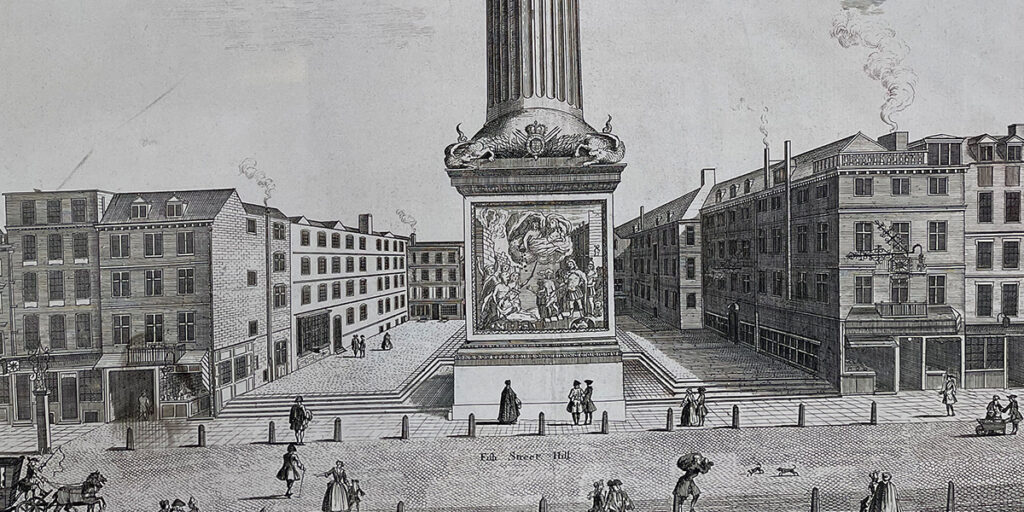
Guest post
The Messenger of Measham Hall: Locations
Anna Abney introduces us to some of the locations Nicholas Hawthorne encounters in The Messenger of Measham Hall – the new, page-turning tale of espionage and intrigue in the years leading up to the Glorious Revolution of 1688.
The City of London
The Royal Exchange, Lombard Street
Nicholas is taken to the Exchange, one of the top sights in 17th-century London, by Edward and Lettice Pemberton.
The small shops upstairs were famous for their luxury accessories – like the deerskin, gold-embroidered gloves Lettice buys.
The arcades and walks below buzzed with wheeler-dealing as merchants and stockbrokers from all over the world conducted their business.
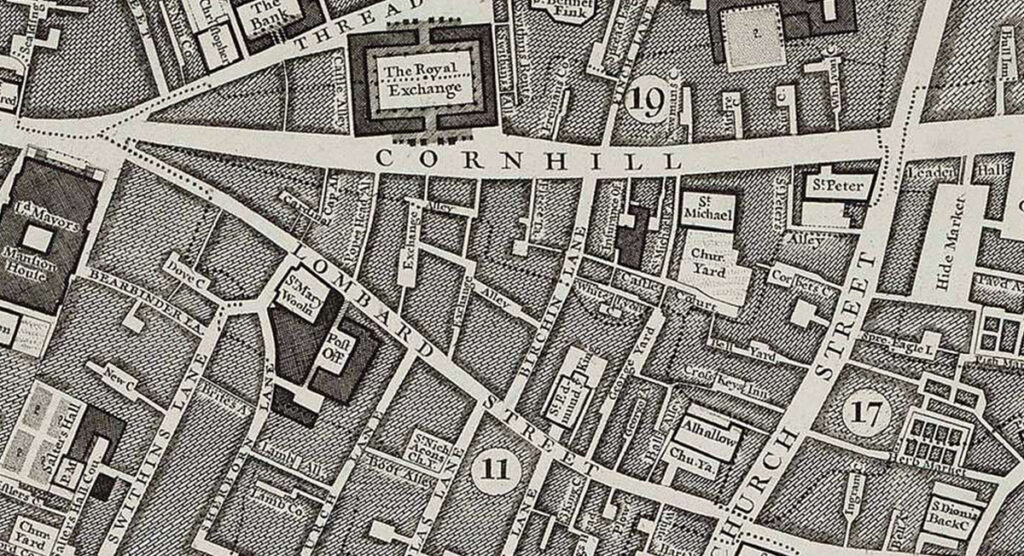
Edward prefers drinking wine in the vaults, which contained dining rooms, warehouses and coffee shops.
To find out more about the heritage of the Royal Exchange, check out their website.
The Monument to the Great Fire of London
Completed in 1677, the monument is one of London’s oldest tourist attractions.
Like Nicholas, you can walk up the 311 steps to the top for an impressive view of the city.
In 1680 an inscription was added to the base declaring: ‘But Popish frenzy, which wrought such horrors, is not yet quenched.’
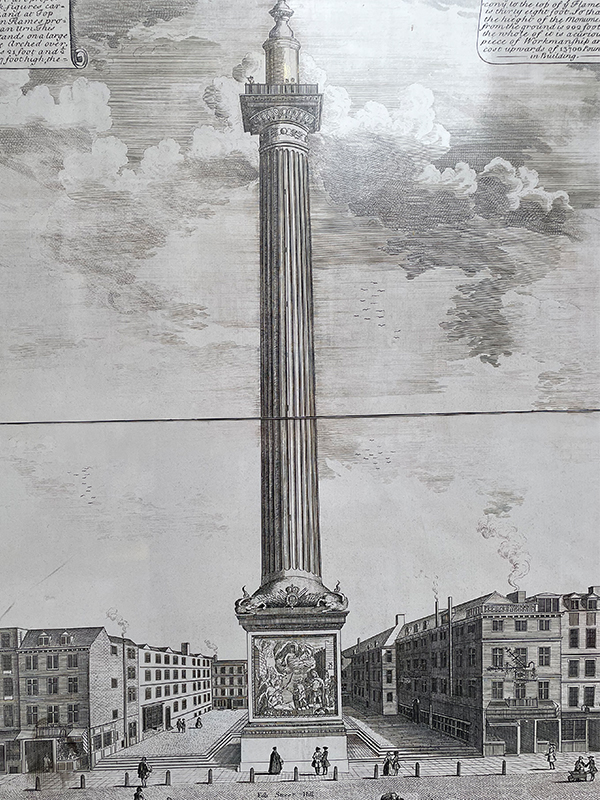
When Nicholas visits in 1687 this anti-Catholic inscription has been covered over under the orders of James II, however, the words were reinstated in 1689 under William III.
The inscription was finally removed in 1830.
You can discover more about the history of the Monument to the Great Fire of London here.
St. Paul's Cathedral
Another victim of the fire was St. Paul’s.
This famous London landmark originally had a spire and Christopher Wren’s design for a remodelled, domed cathedral (based on Hagia Sophia mosque in Istanbul) was attacked for being ‘untraditional’.
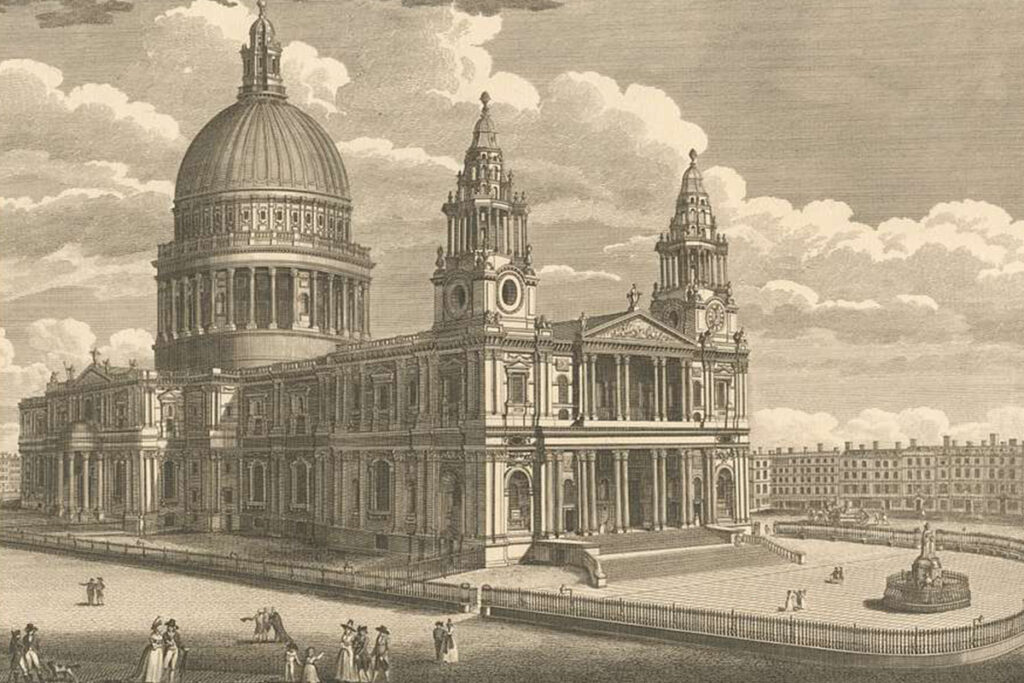
The rebuilding of St. Pauls took so long (35 years) “as slow as a St. Paul’s workman” became a popular phrase.
Robin Liddell and his uncle Jem (who also appear in The Master of Measham Hall) work as carpenters on the project.
Derbyshire
Measham Hall
The Measham of my novels is loosely based on the place now in Leicestershire (previously Derbyshire), which was home to my ancestors, the Abneys.
Measham Hall was built in 1767 by William Abney, but I have imagined the building which may have preceded it.
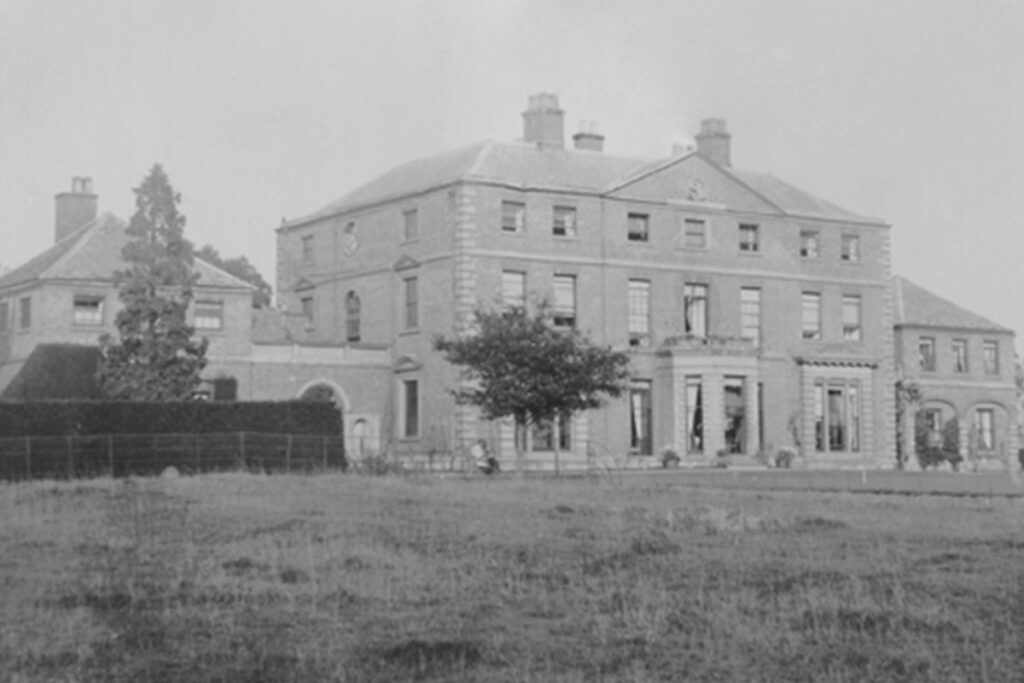
Modest country houses were updated over the centuries by successive generations and Measham Hall fits this pattern.
Ashby de la Zouch Castle
A royalist stronghold during the English Civil Wars, Ashby Castle surrendered to the parliamentarians in 1646.
“Nicholas’ own grandfather had been briefly imprisoned there before escaping abroad and Father said the late, martyred King had visited twice. Nicholas sometimes snuck into the grounds” – The Master of Measham Hall
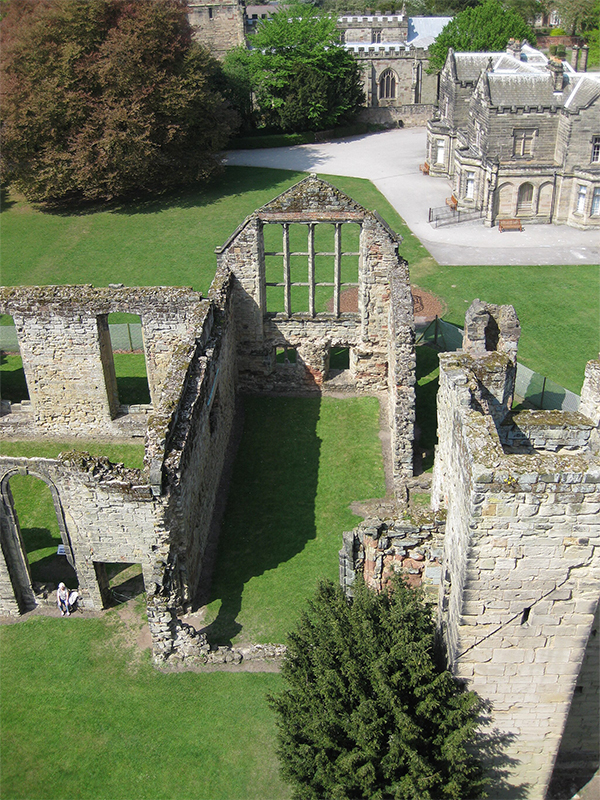
Magistrates Court, St Mary's Gate, Derby
The Measham of my novels is loosely based on the place now in Leicestershire (previously Derbyshire), which was home to my ancestors, the Abneys.
Measham Hall was built in 1767 by William Abney, but I have imagined the building which may have preceded it.
Find out more from Discover Derby and the Derbyshire Historic Environment Record.
France
The English Jesuit college at Saint-Omer
Nicholas and his cousin, Father Matthew both attend ‘St Omers’.
The college was founded in 1593 in order to educate Catholic youths between the ages of 14-19 (although students could attend in their twenties).
Catholic education was illegal in England and parents took a dangerous risk in sending their sons there.
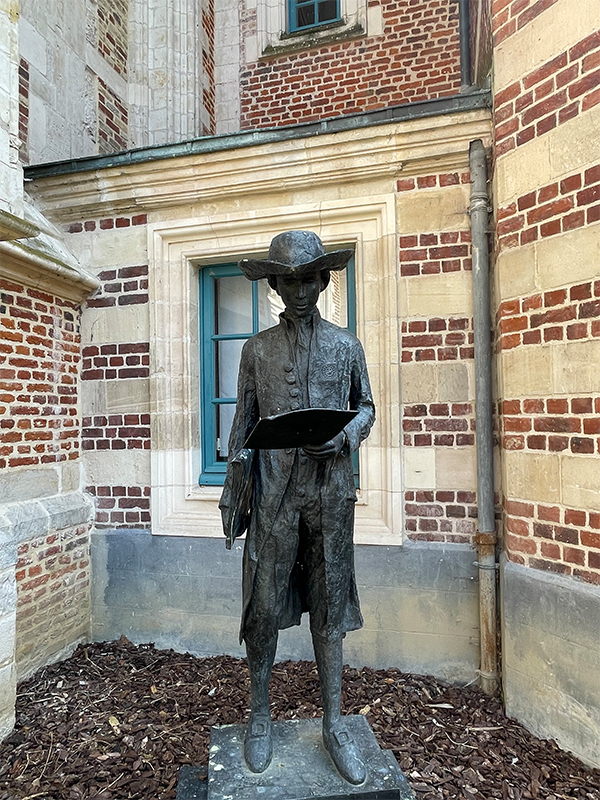
The 16 hour school day was gruelling, though afternoons were spent on music and drama. St Omers exists today as Stonyhurst College in Lancashire.
You can visit these locations by grabbing yourself a copy of The Messenger of Measham Hall – a 17th-century tale of espionage and intrigue by Anna Abney. Out now.
‘A great yarn… Recommended’ LEONORA NATTRASS, author of Blue Water
‘Gripping: a real page turner’ CLARE MARCHANT, author of The Mapmaker’s Daughter
‘A thrilling adventure’ MIRANDA MALINS, author of The Rebel Daughter
‘Immersive, with a cracking plot’ LIANNE DILLSWORTH, author of Theatre of Marvels



